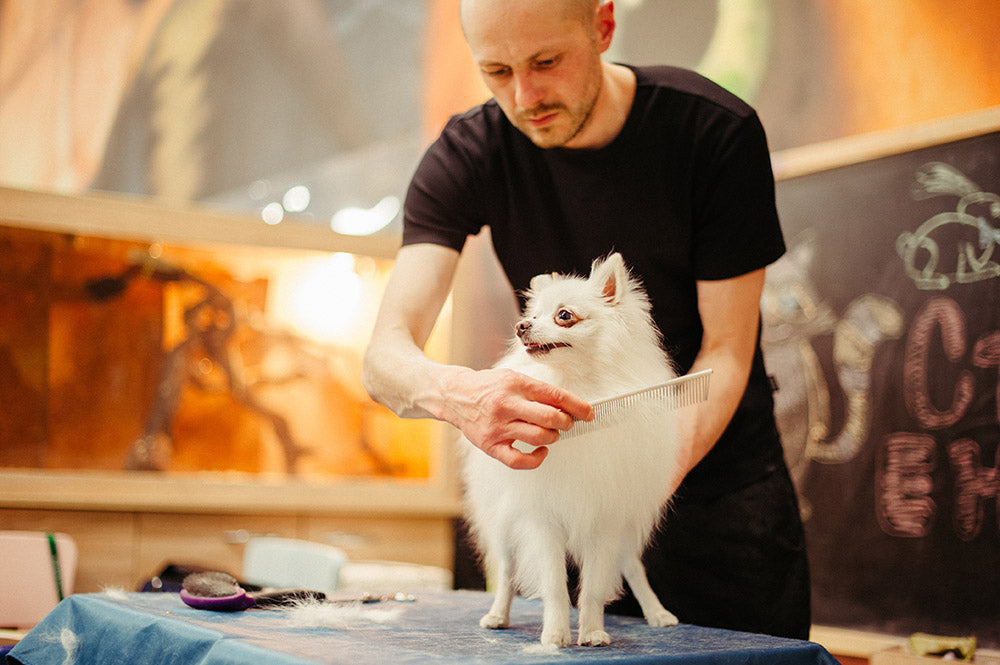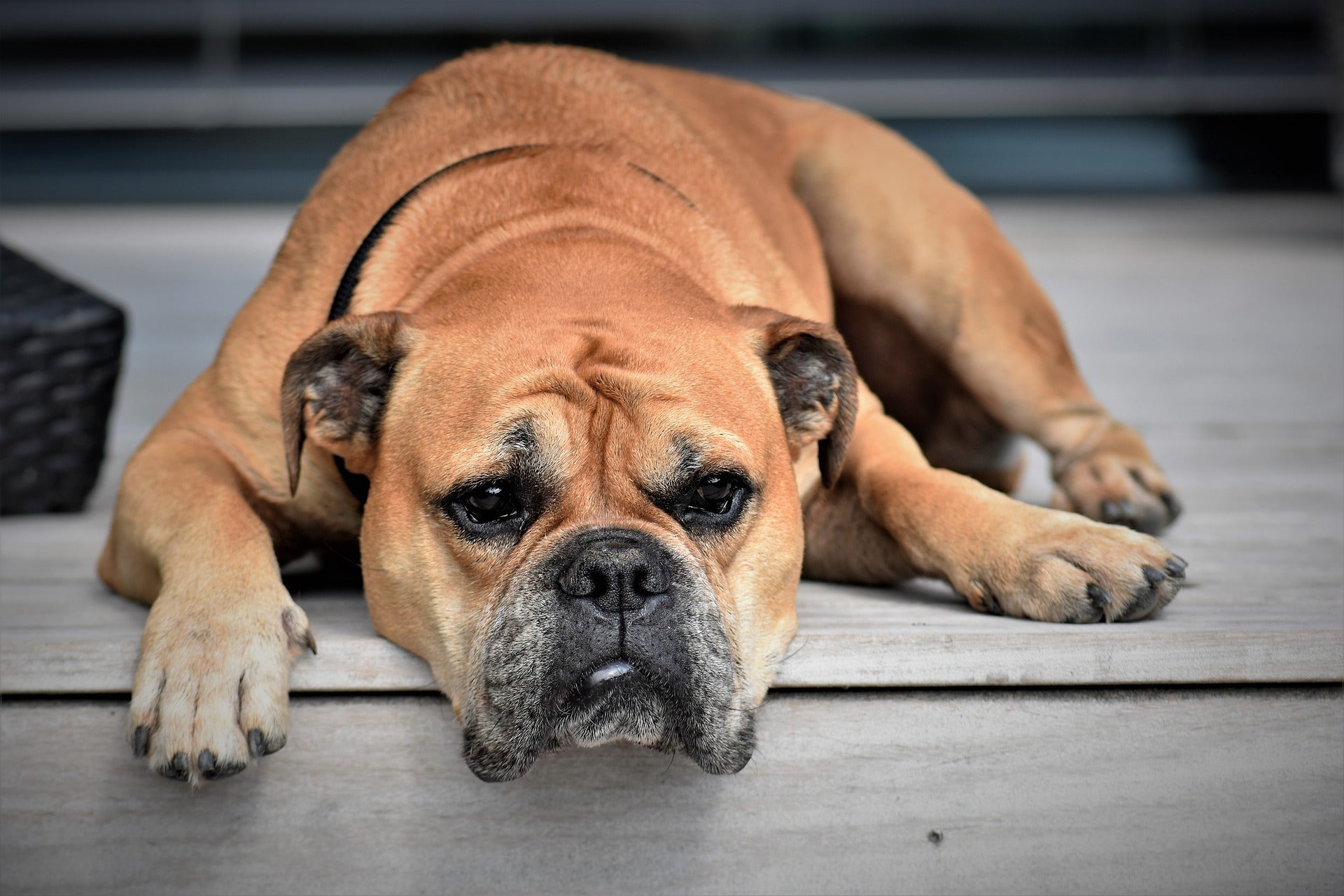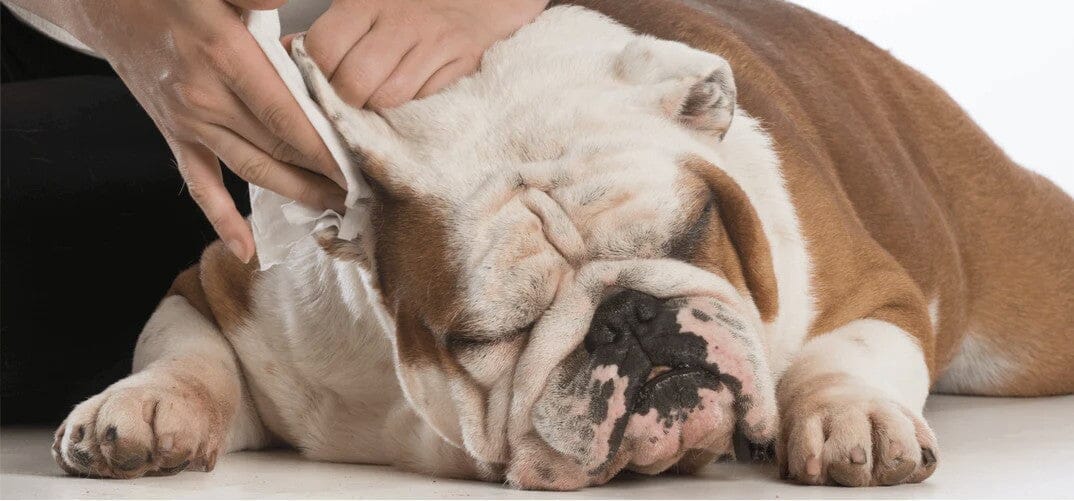Grooming Your Dog at Home
This pandemic and subsequent lockdown and social distancing have created many changes for everyone. Non-essential businesses are closed with no scheduled opening date and this includes dog groomers. Pet owners realize that they will probably have to step up to meet the challenge of learning how to groom their own dogs. They are realizing that sometimes drastic situations call for drastic measures.
On the other hand, this might be the perfect opportunity to learn a new skill and save money. And we'll show you how to relax and enjoy the extra bonding time with your dog.
Best Grooming Tools for Your Dog
Dog grooming requires special tools designed for the job. While most tools can be used on any dog, long haired dogs do require different equipment than short haired dogs. Pet stores carry these tools, supplies, and equipment. Online stores will ship directly to the home.
Having the right tools makes dog grooming much easier and safer for your dog. Organize all supplies in advance to save time and eliminate unnecessary trips away from the grooming area.
.....High quality dog brushes
.....A good comb
.....Dog shampoo
.....Mild conditioner for dogs
.....Microfiber drying mitt
.....Dog nail clippers
.....Coat spray
.....Dog grooming clippers
.....Paper towels
.....Blow dryer
.....Plenty of towels
.....Toothbrush for dogs
.....Cotton Balls
.....Q-tips

Choose a Convenient Room to Groom In
Most people probably do not have a grooming table, but any table will work. A bathroom or laundry room with access to water is ideal. It is important to have a large, comfortable, and safe place to secure the dog during the grooming process. A bathtub or large sink works well for a dog wash. Make sure all supplies are within arm's reach before beginning.
Begin by Brushing Your Dog
Pay close attention to the dog's coat. Brush gently to remove any matted hair. Talk gently and calmly to relax your dog while brushing. Long haired dogs are much more likely to have matted hair, so do not skip this step. A slicker brush works well for the task of removing dirt or pollen before bathing. Brushing is the only way to find knotted hair. Work in small sections without rushing through. Begin at the feet and work up.
There is no substitution for a good dog comb, especially for dogs with long hair. Use a slicker brush first, and then use a comb. The comb is meant to find any trouble spots such as tangles and clumped hair. Start combing at the skin and run it through to the tips of the hair. Work from the root all the way to the tip. If a mat cannot be brushed or combed out, cut it or shave it. Severe matting is painful for a dog. If you decide to cut, use only rounded scissors to avoid injuries.
Bathing and Drying
Use a handheld showerhead or sprayer after adjusting the water in the tub or sink to lukewarm. Make sure that the entire coat is covered with water before adding shampoo. Natural shampoos are better for sensitive skin. Lather and massage the coat making sure to clean the belly, tail, chest, and feet. Use a warm cloth to clean the muzzle area.
Rinse with warm water and apply a gentle conditioner before the final rinse. Pat dry with a soft towel. Take the time to clean the eyes using a cotton ball to remove any discharge that may have built up. Clean the eyes in a gentle, circular motion. To eliminate all moisture after the dog wash, comb the coat then use a handheld hair dryer set on low to medium temperature. Drying completely eliminates scratching behind the ears. Make sure the hair is completely dry before trimming or cutting.
Trimming and Clipping
Using good clippers means the difference between a good trim and a bad one. Professionals use clipper blades that allow them to determine the length of the coat easier.
Scissors are not recommended as they can easily injure a dog that makes a sudden move. Be careful not to press the clippers roughly against the dog's skin. Use the clippers against the direction the hair grows. Move the clippers slowly across the dog's body, which removes the hair in even lines. Start at the neck and move down. Go under the ears, down the chest and then up to the throat. The sides and backs are next followed by the genital area and the legs should be last.
And remember that long haired dogs require more frequent trimming than short haired ones.
Cleaning Teeth and Gums
An important part of grooming a dog is keeping the mouth clean. Just like humans, dogs need to have their teeth brushed. It is not as hard as it sounds. It is most important to clean the outer sides of the teeth by starting at the back and moving forward.
Because some dogs gag when a toothbrush with toothpaste is inserted in their mouth, a warm, clean washcloth serves the same purpose. Cleaning prevents cavities and gum disease.
Trimming the Nails
Most dogs do not like to have their paws touched, but will sometimes allow their owner to do so. It is important to check paws often to determine if dog nail trimming is necessary at this time.
Human nail clippers can be used on smaller dogs, but larger breeds with thicker nails require plier-type trimmers. These trimmers have sharp blades that easily cut the toughest nails smoothly and quickly. Successful nail trimming takes patience and practice to perfect. Dog nail trimming requires time and patience. It is too easy to injure a dog's paw if trimming is not done right. If a dog's paw is especially sensitive to the touch, it might be a good idea to wait until the next vet visit if possible. If the nails have started curling and are cutting into the paw, do not attempt to cut or trim them. Wait to have a professional handle the job.
Helpful Tips for Beginners
Remember that this is a stressful time for everybody. Dogs can sense your uneasiness and frustration. It is not necessary to rush through the grooming session.
Give yourself and your dog frequent breaks. Choose a quiet time when your dog is calm and relaxed. Maybe engage in playtime to burn off excess energy before beginning. Do not be afraid of making a mistake. Get organized and plan each grooming step in advance. Consider rewarding your dog with treats for good behavior. Your patience will pay off and the job will be easier the next time.



